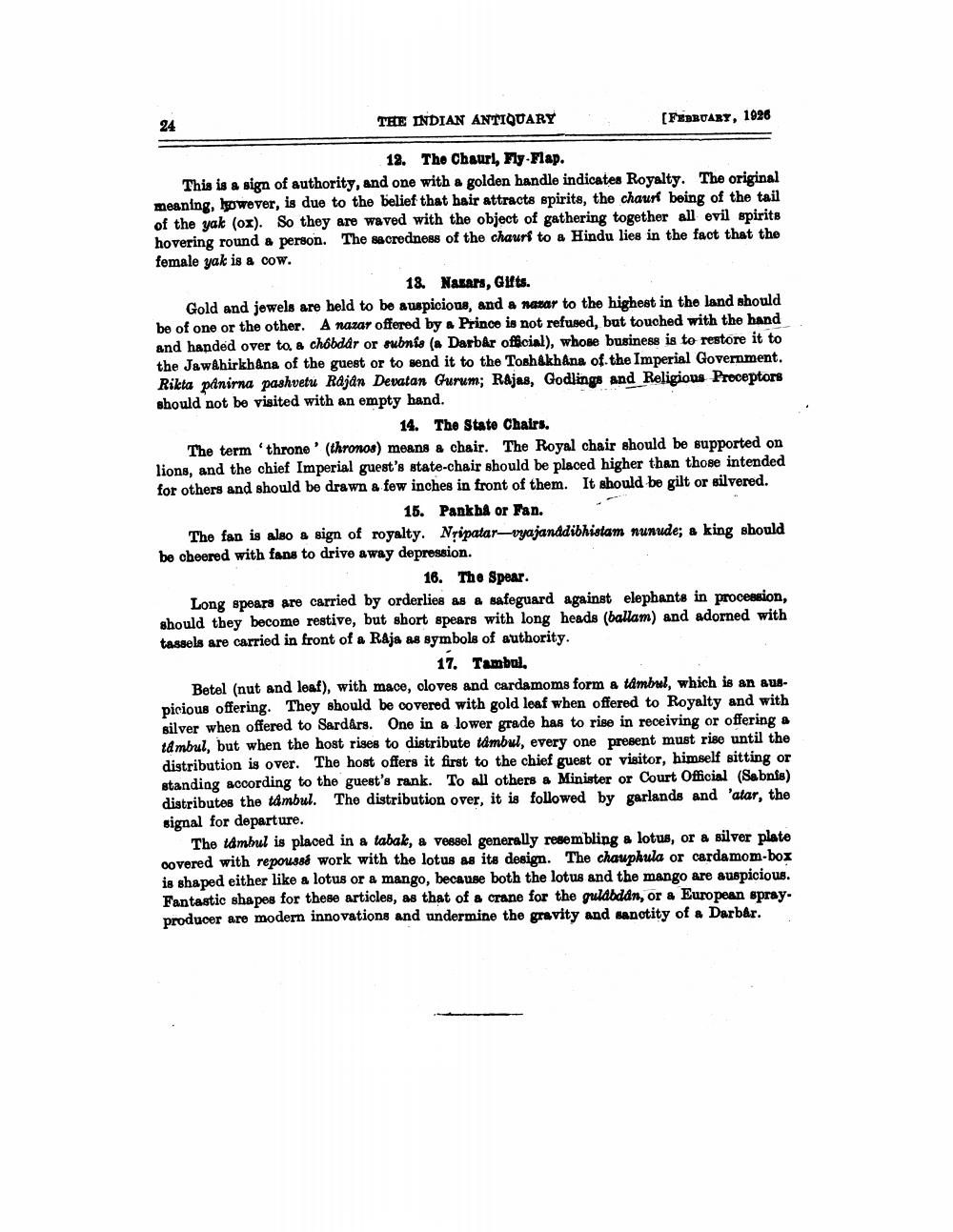________________
THE INDIAN ANTIQUARY
(FEBRUARY, 1928
12. The Chaurl, Fly Flap. This is a sign of authority, and one with a golden handle indicates Royalty. The original meaning, however, is due to the belief that hair attracts spirits, the chaurí being of the tail of the yak (ox). So they are waved with the object of gathering together all evil spirits hovering round a person. The sacredness of the chaurí to a Hindu lies in the fact that the female yak is a cow.
18. Nazars, Guts. Gold and jewels are held to be auspicions, and a natar to the highest in the land should be of one or the other. A nazar offered by a Prince is not refused, but touched with the hand and handed over to a chóbdar or subnis (a Darbar official), whose business is to restore it to the JawAhirkhana of the guest or to send it to the Tosh&kh&ns of the Imperial Government. Rikta panirna pashvetu Ráján Devatan Gurum; Rajas, Godlings and Religions Preceptors should not be visited with an empty hand.
14. The State Chairs. The term 'throne ' (thronos) means a chair. The Royal chair should be supported on lions, and the chief Imperial guest's state-chair should be placed higher than those intended for others and should be drawn a few inches in front of them. It should be gilt or silvered.
15. Pankha or Fan. The fan is also a sign of royalty. Mripatar-vyajanddibhistam nunude; a king should be cheered with fans to drive away depression.
16. The Spear. Long spears are carried by orderlies as a safeguard against elephants in procession, should they become restive, but short spears with long heads (ballam) and adorned with tassels are carried in front of a Raja as symbols of authority.
17. Tambal, Betel (nut and leaf), with mace, cloves and cardamoms form a támbril, which is an auspicious offering. They should be covered with gold leaf when offered to Royalty and with silver when offered to Sardars. One in a lower grade has to rise in receiving or offering a tambul, but when the host rises to distribute tambul, every one present must rise until the distribution is over. The host offers it first to the chief guest or visitor, himself sitting or standing according to the guest's rank. To all others a Minister or Court Official (Sabnis) distributes the tambul. The distribution over, it is followed by garlands and 'atar, the signal for departure.
The idmhul is placed in a tabak, a vessel generally resembling a lotus, or a silver plate covered with repoussé work with the lotus as its design. The chauphula or cardamom-box is shaped either like a lotus or a mango, because both the lotus and the mango are auspicious. Fantastic shapes for these articles, as that of a crane for the guldbddn, or a European spray. producer are modern innovations and undermine the gravity and sanctity of a Darbar.




